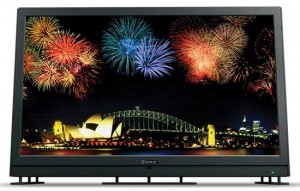![]()
 Dolby Laboratories announced that the Dolby Professional Reference Monitor has added support for content shot at a rate of 48 frames per second (fps). It already supports 60 fps, and expanded support for 48 fps is part of a set of new features that includes support for the AMPAS ACES workflow, which is required by studios for mastering feature films, and Image Systems Nucoda 3D LUT support to help with the color-managed workflow. The software update with new features is planned to be available beginning next week.
Dolby Laboratories announced that the Dolby Professional Reference Monitor has added support for content shot at a rate of 48 frames per second (fps). It already supports 60 fps, and expanded support for 48 fps is part of a set of new features that includes support for the AMPAS ACES workflow, which is required by studios for mastering feature films, and Image Systems Nucoda 3D LUT support to help with the color-managed workflow. The software update with new features is planned to be available beginning next week.
Directors Peter Jackson and James Cameron have both advocated 48 fps capture and display for digital cinema. Dolby and ARRI have produced a short film in 48 fps and high dynamic range that both companies will showcase in their NAB booths (SU1212 and C6737, respectively) to highlight the capabilities of the capture and display components of filmmaking. Shot using an ARRI Alexa digital camera, the film will be played on the Dolby Professional Reference Monitor.
“We’re excited to work with Dolby because the Dolby Professional Reference Monitor shows off highly detailed images that the Alexa captures so cleanly,” said Glenn Kennel, president and CEO, ARRI. “It elevates the content, making it look incredibly sharp and realistic.”
“This is the first time I’ve worked in 48 fps, and I can honestly say that the images are incredibly sharp and clear and the Dolby monitor displays them more accurately than I’ve ever seen,” said Rob Legato, the Academy Award–winning visual effects supervisor who served as the director, director of photography, and colorist of this short film. “I undertook this project to experiment with high frame rate and high dynamic range, and have walked away truly impressed with the outcome.”
Dolby is also now providing postproduction facilities with display-calibration services, a convenient way to ensure that facilities maintain the most precise color accuracy and true black levels. The company’s worldwide team is equipped to deliver the service when and where needed, with minimal downtime on the set or in the postproduction facility.
“Just as we provide calibration services to studios and mix rooms for audio, Dolby is now doing so for the Professional Reference Monitor. It’s an inexpensive and easy way for post facilities to receive the highest level of performance,” said Bill Admans, director of production and postproduction, Dolby Laboratories. “Facilities rely on Dolby because we continue to innovate and bring new approaches to solve customers’ problems, enhancing the content-creation process.”





